October 21, 2020
Wondrous Wanderings at the Wildflower Center
The seasons, they’re always a-changin’. As autumn unfolds, the Lady Bird Johnson Wildflower Center flaunts fall sensations to illustrate the beautifully progressive nature of native plants.
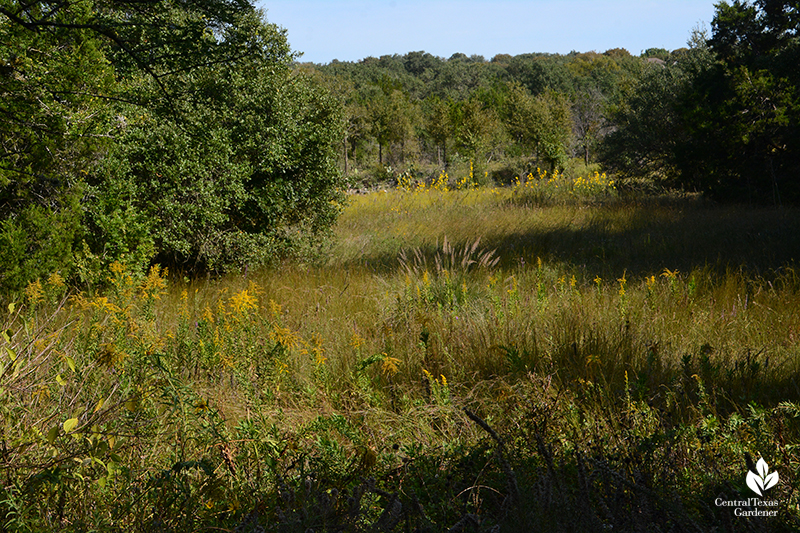
Despite record heat and drought, Lindheimer and pink-hued Gulf muhly flowers dance on grassy wands.
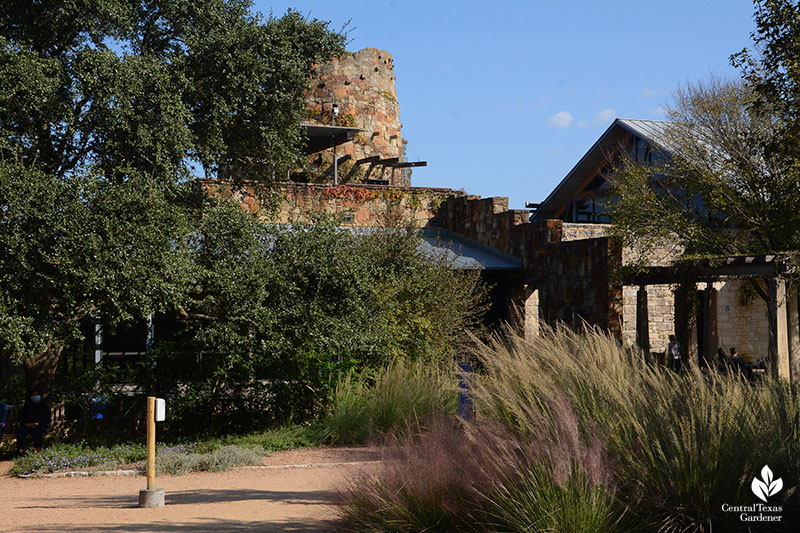
Lindheimer muhly’s also tagged “big muhly” for a reason. Its stature and feathery plumes dramatize any sunny spot.
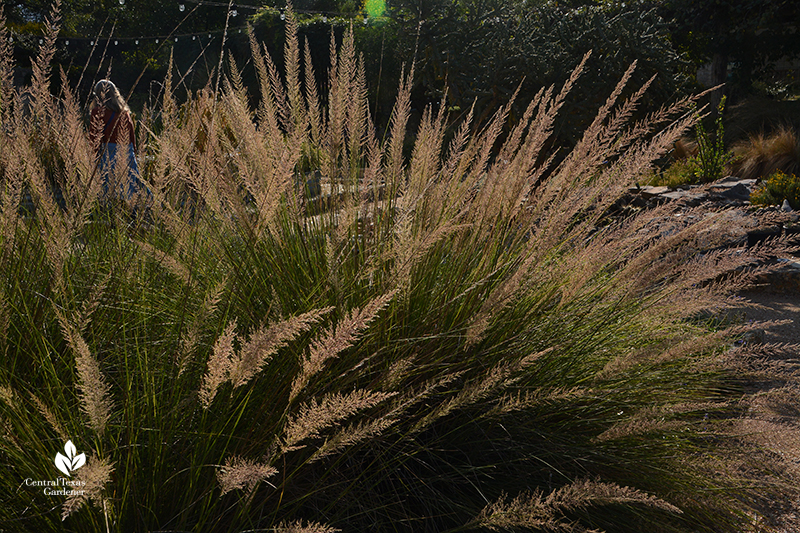
Until our front garden got too shady, it was my husband’s favorite view as he rounded the corner on our curvy street. Clustering in groups or rows magnify their grandeur. Evergreen most of the year, muhly grasses make great “hedges” to dignify spaces, too.
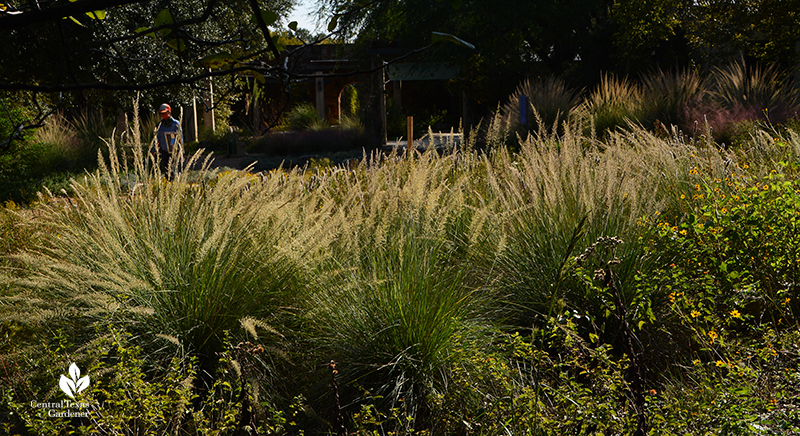
But Lindheimer muhly looks almost sedate against bushy bluestem’s explosive puffballs.
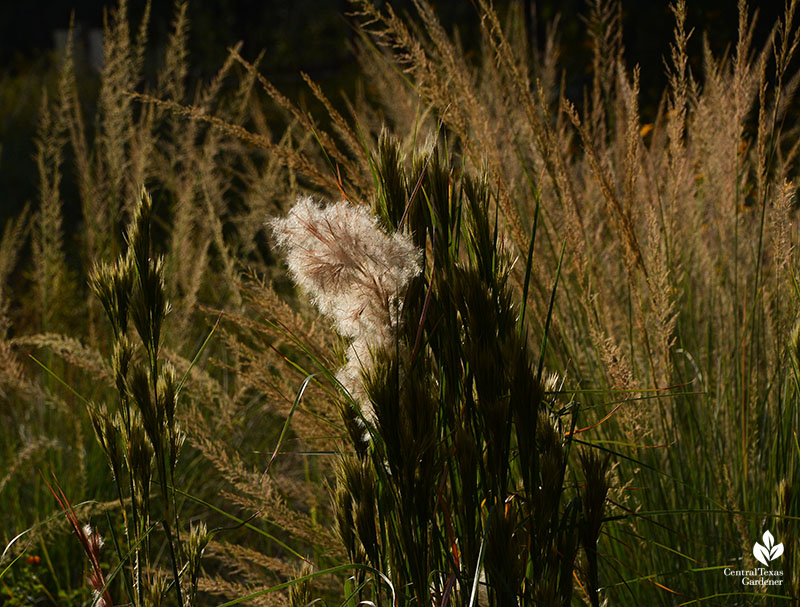
Seed heads of perennial Liatris glimmer against its sunny grass companions.
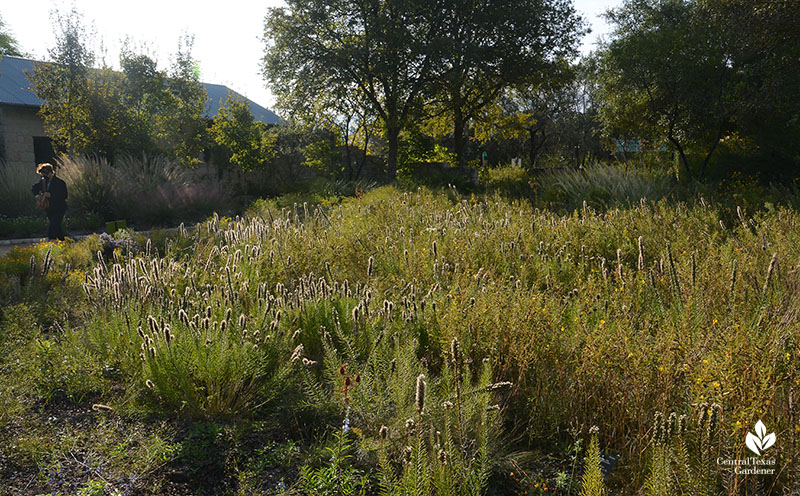
Just across the path, a few spikes hang onto the last of the deep lavender flowers.
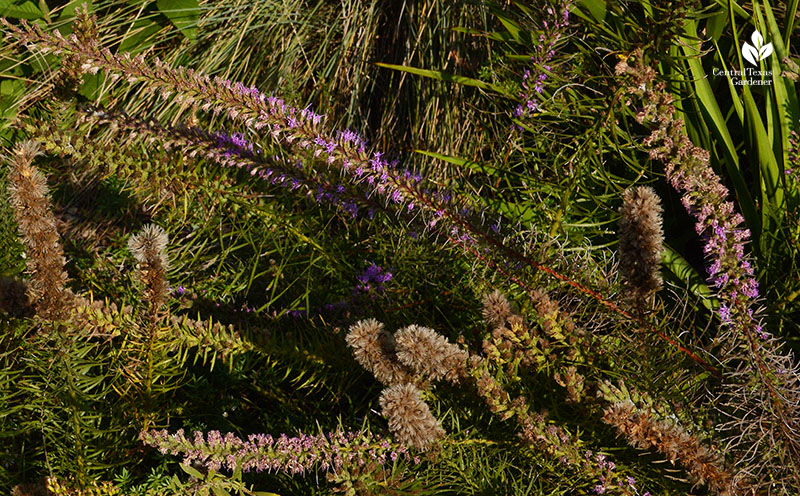
Everywhere, perennial Plateau goldeneye (Viguiera dentata) promised pots of pollinator gold.
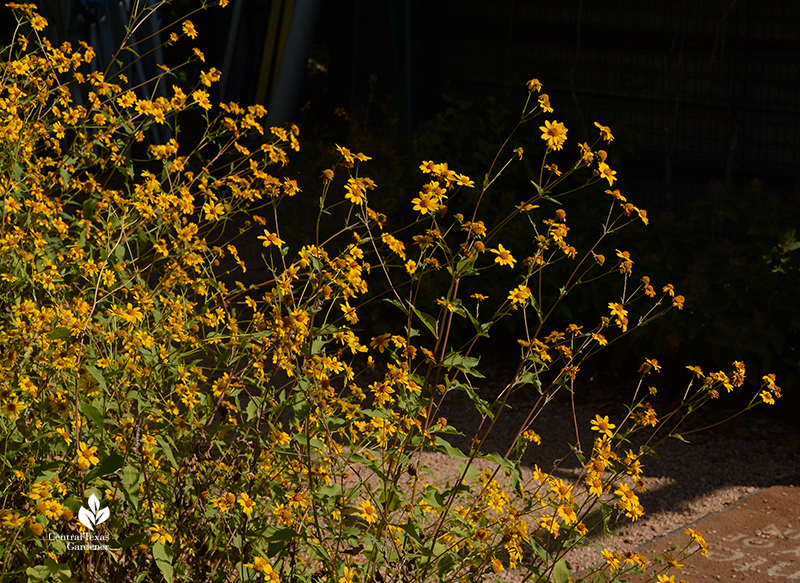
Energizing sights met mood-elevating sounds: squeals of delight and thumps of racing little feet to this year’s newly installed Fortlandia. One earnest tot ran past me faster than the wind, gleefully shouting “Climb, climb, climb!”
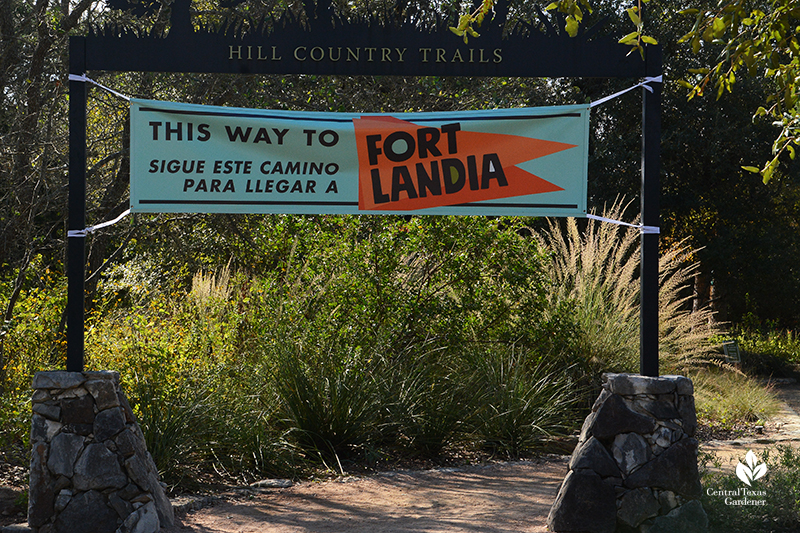
Since Fortlandia lasts until January 31, I’ll race past her another day to adventure on custom-designed forts designed and built by local architects, designers and artists.
In my two-hour reservation slot, this time I took the path to the demonstration gardens that illustrate compatible choices to plant at home. In the Habiturf® plot, short grasses, like blue grama, wave tiny wands.

Buffalograss and curly mesquite join the Habiturf® mix to illustrate a drought-hardy lawn in sun.
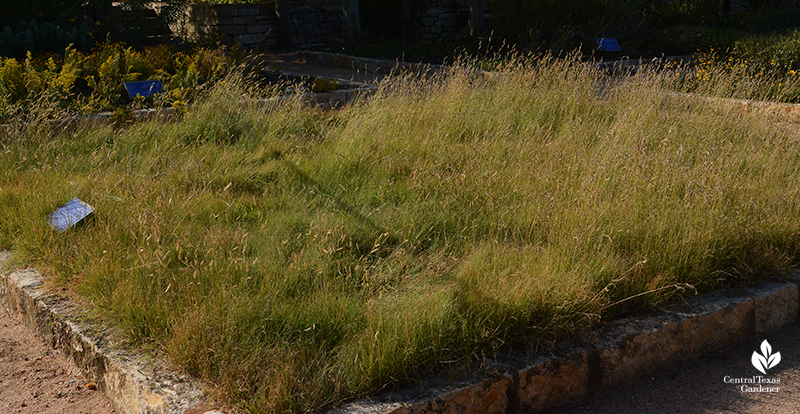
J.J. Priour’s “Local Light and Water” turquoise glass and limestone sculpture elevates the broad view of these low beds.
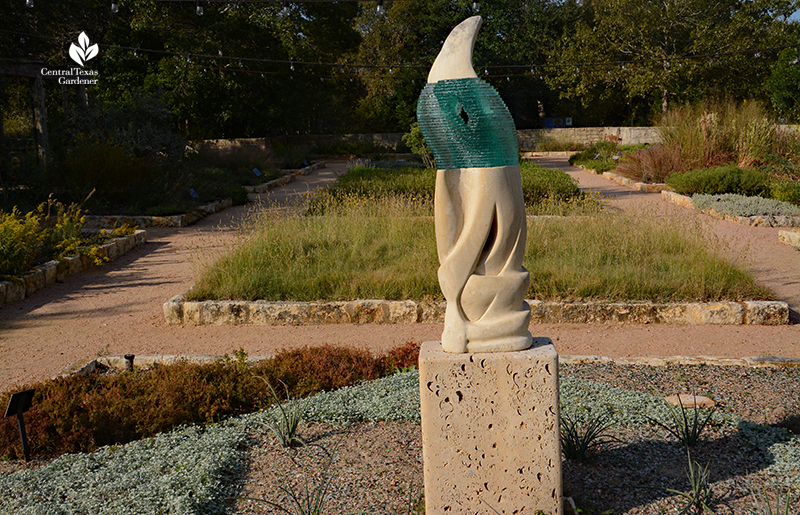
Indeed, it is a study in light. Below its pedestal, geometrically pruned native silver ponyfoot, framed by glass nuggets, reminisce of silvery pools.
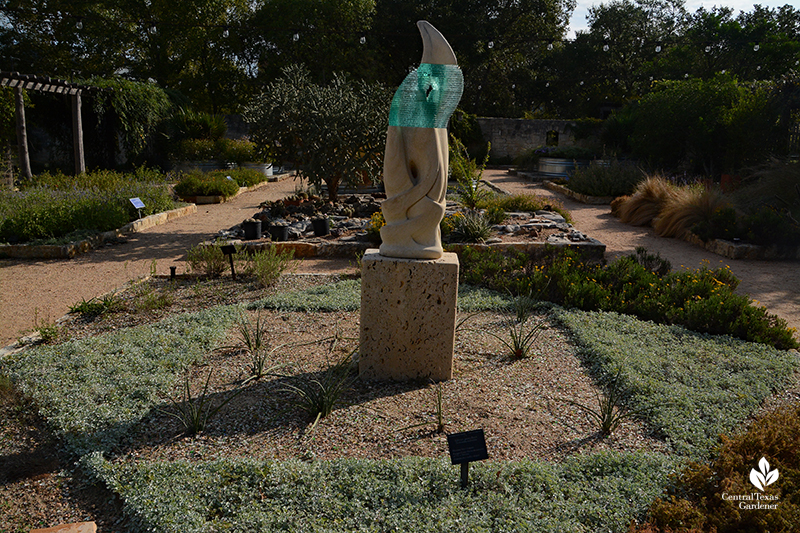
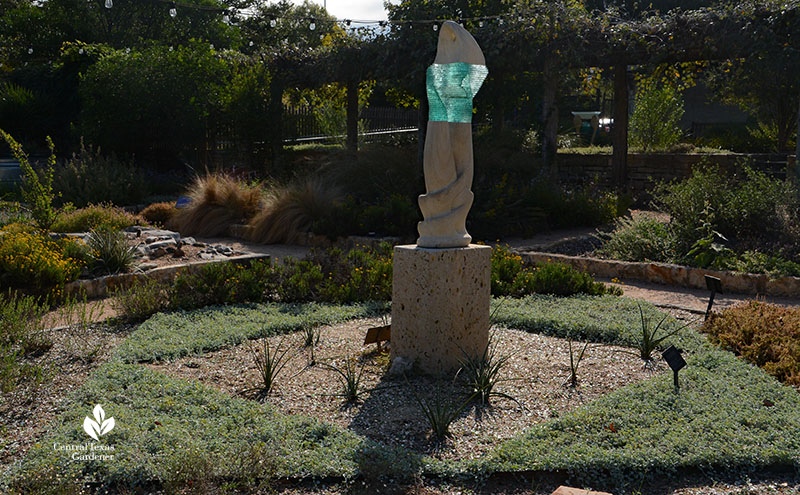
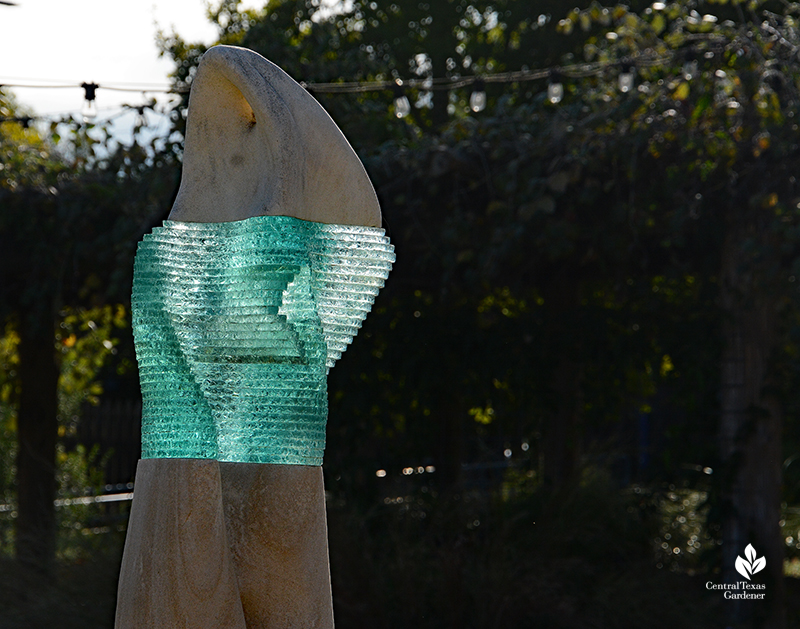
Black dalea also hugs the ground, spilling over its limestone border with tiny purple flowers for
crowds of bees.
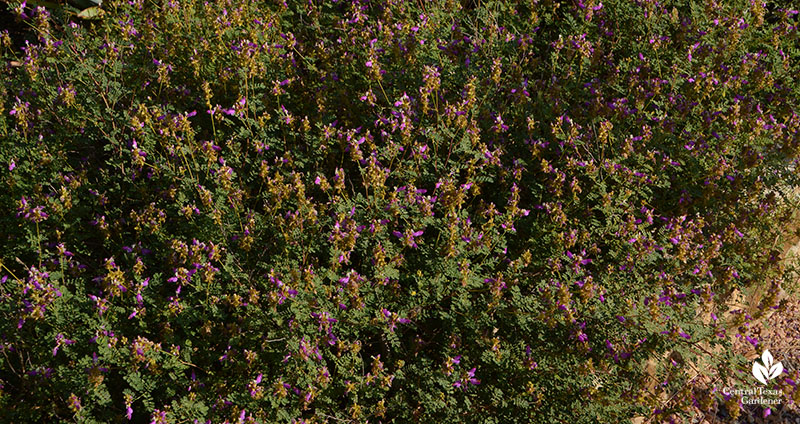
Stately Maximilian sunflower screens a shady passageway where a cozy bench invites a break to watch pollinators zoom to those supersized flowers.
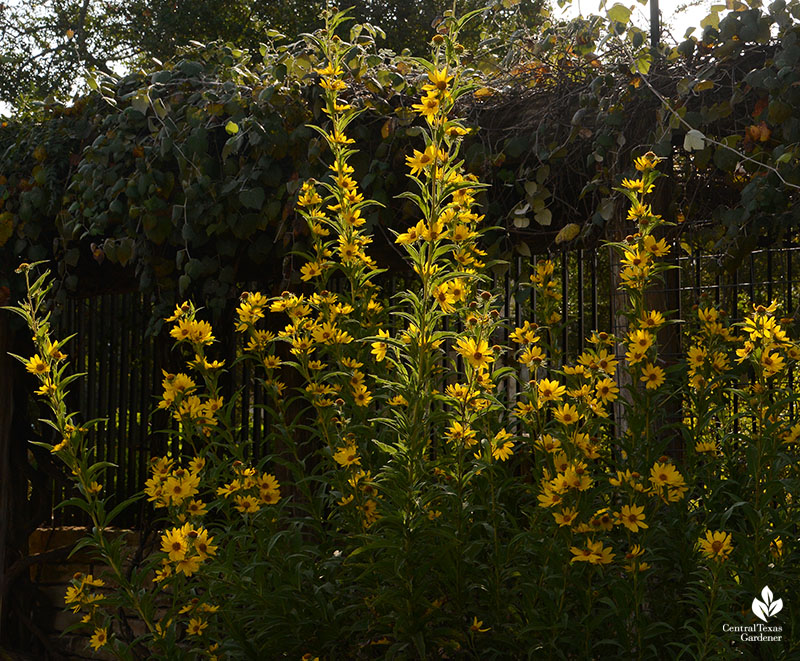
It’s also the fall standout in the Fiber & Dye garden, along with low-growing, frothy prairie goldenrod (Solidago nemoralis), prickly pear and others. And in case you’ve heard the myth, it’s not true that goldenrod causes those fall sneezes!
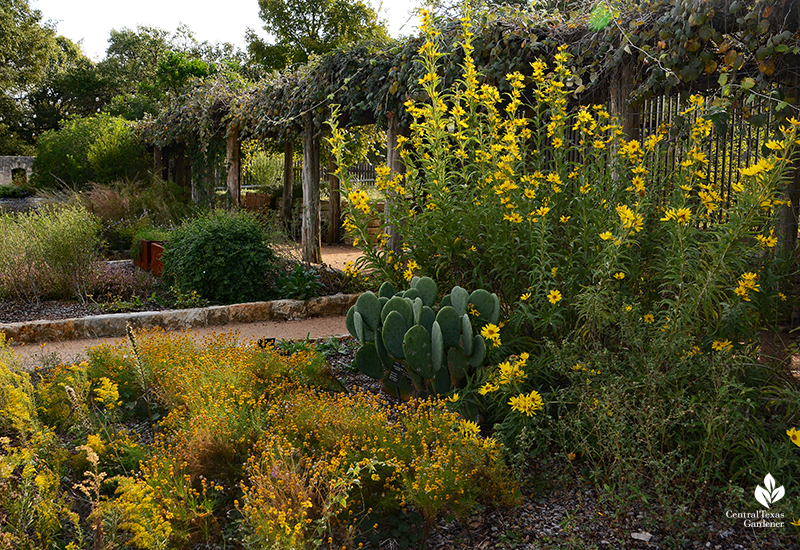
Stock tanks bring another geometrical and height dimension to the rectangular layout. Aromatic aster’s one of their ambassadors to bees, butterflies, and many other pollinators.
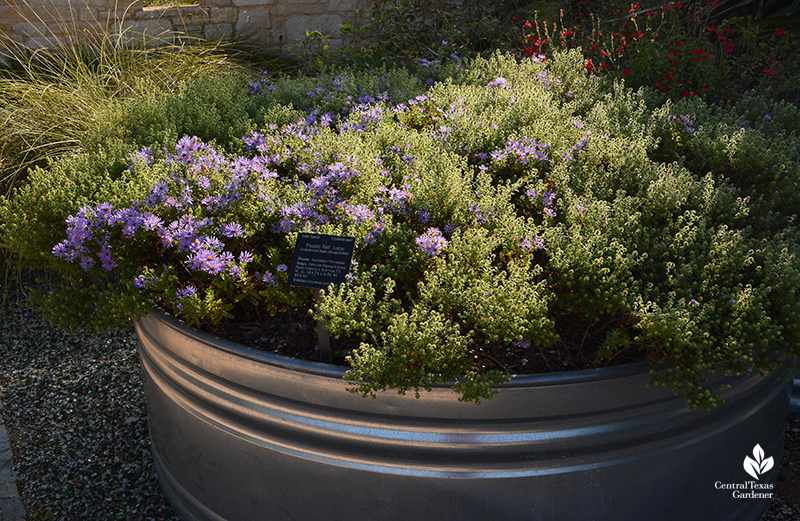
And what a thrill to find airy annual wild aster (not sure which one) tucked into another spot. These used to pepper my garden and now and then they pop up again.
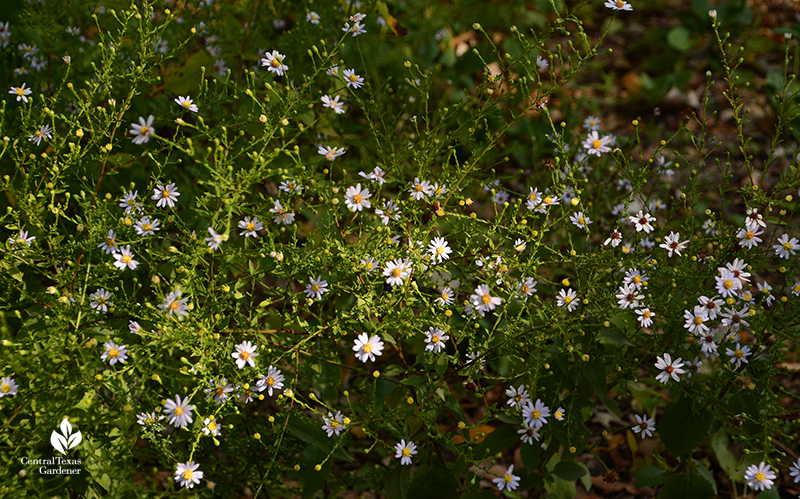
Another stock tank hosts wild poinsettia (Euphorbia cyathophora), also called Fire on the Mountain. White gaura leans in.
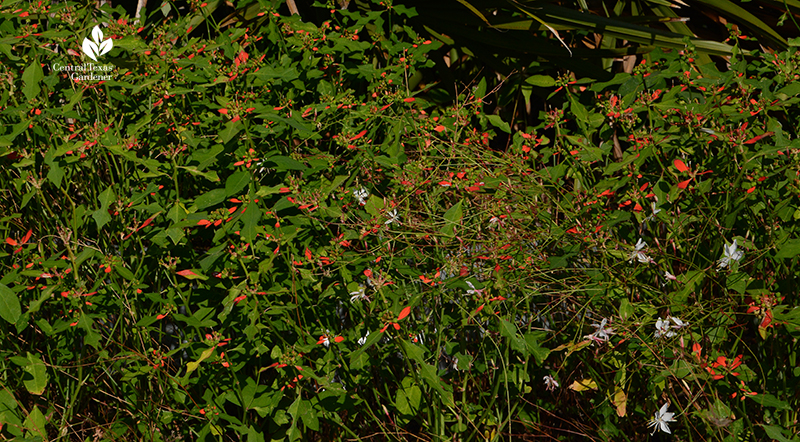
In every part shade spot, perennial shrub American beautyberry’s glossy, purple fruits claim fall fame after waiting in the background for months.
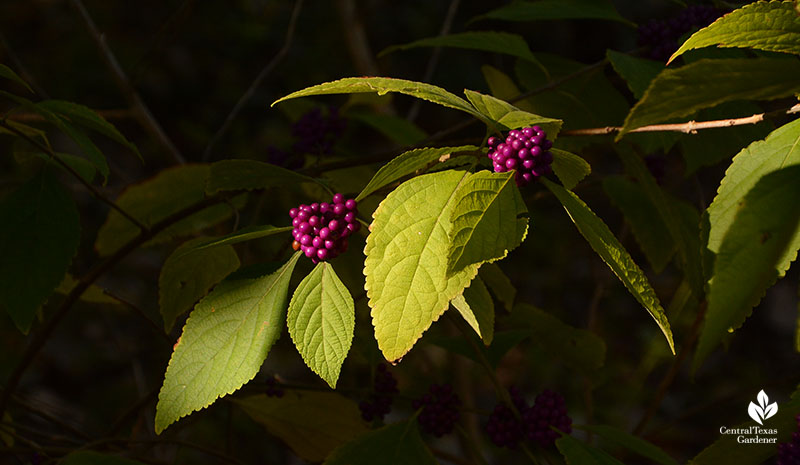
There’s lots of wonder (and peaceful thoughts) along the streams, ponds, and waterfalls. But I never expected to see a blooming crinum lily in the entrance waterfall and pond!
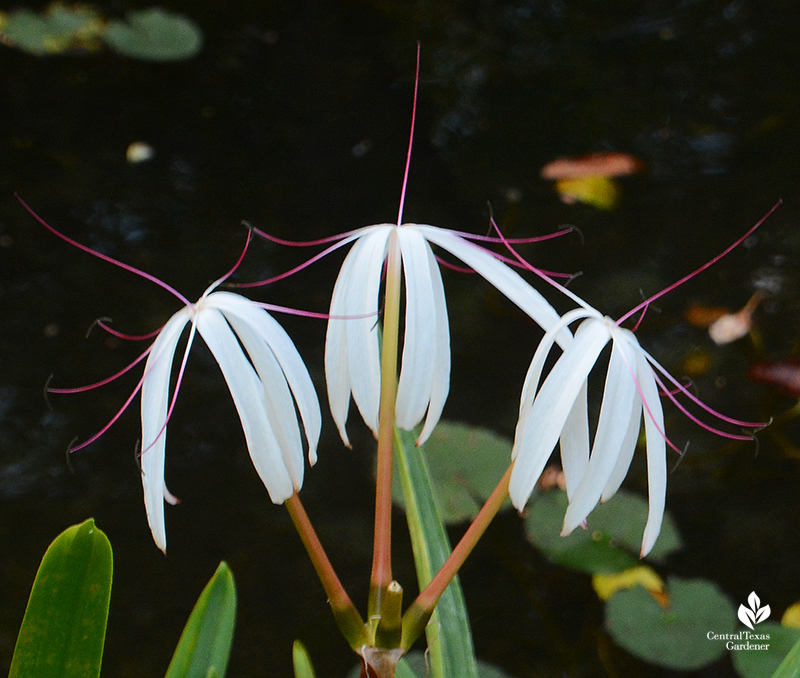
Reservations are required for now, but it’s easy to do! Wonder awaits.
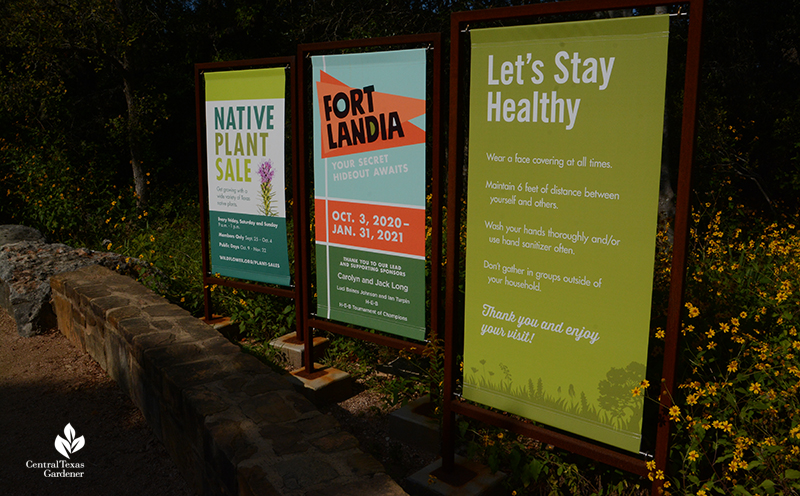
Thanks for stopping by! See you next week, Linda

